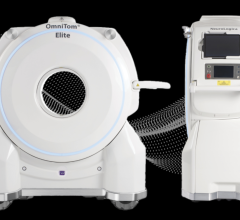
April 27, 2012 — Amidst growing concerns over healthcare costs, the Society of Nuclear Medicine (SNM) is offering a solution to help cut back on federal spending in its new report, “Imaging with CARE.” According to the report, an estimated $1.32 billion could be saved on nuclear and molecular imaging procedures over the next 10 years by taking steps to reduce the number of repeated scans due to poor quality images.
Approximately 130 million diagnostic radiology procedures—including X-rays, magnetic resonance imaging (MRI), computed tomography (CT) and nuclear medicine scans—are performed on 30 million Medicare enrollees each year. According to the Government Accountability Office, nuclear and molecular imaging scans account for $2.4 billion in costs. With an estimated four to seven percent of these procedures repeated due to poor imaging, Medicare spends $132 million in avoidable scans each year.
“Having to repeat a nuclear or molecular imaging scan because of the poor quality of the original image is something that shouldn’t happen and something that can be fixed,” said Ann Marie Alessi, BS, CNMT, NCT, RT(N), president of SNM’s Technologist Section. “By ensuring that the technologists performing these scans have appropriate training and education, Congress can ensure that most of these repeated scans are avoided.”
Each year an estimated 17 million nuclear medicine and molecular imaging procedures are performed in hospitals and medical settings across the United States. Nuclear medicine procedures use radioactive substances to visualize the molecular processes through which the body functions. This provides physicians with unique data that can help personalize treatment for heart disease, cancer, brain disorders and other diseases.
Currently only 30 states and the District of Columbia[1] have certification or licensure provisions for nuclear medicine and molecular imaging technologists that require them to be certified by a national credentialing organization. Twenty states[2] do not regulate this profession at all.
“Many state regulations also include continuing education requirements,” added Alessi. “With new technologies upon us every year, it’s critical that nuclear medicine and molecular imaging technologists are up-to-date on the techniques needed to appropriately perform the imaging scans.”
Poor quality scans can also result in misdiagnosis of disease, delays in treatment and unnecessary anxiety for the patient. If additional testing is required, patients are exposed to an increased amount of radiation. While imaging can be an invaluable tool, the procedures do carry a potential health risk, and radiation can be harmful if administered improperly.
To improve the quality of medical imaging, the Consistency, Accuracy, Responsibility and Excellence in Medical Imaging (CARE) bill has been introduced in Congress. If enacted, the bill would establish minimum education and certification standards for personnel who perform nuclear medicine and molecular imaging procedures. As a result, institutions that provide medical imaging or radiation therapy to Medicare patients would be required to employ personnel who meet or exceed the standards set by the federal government.
The CARE bill is supported by the Alliance for Quality Medical Imaging and Radiation Therapy, a group co-founded by SNM, its Technologist Section and the American Society of Radiologic Technologists in 1998. Since then, an additional 20 organizations have joined the alliance; together, the 23 groups represent more than 500,000 health care professionals. The bill currently has 89 co-sponsors, and it is expected that companion legislation will be introduced in the U.S. Senate.
For more information: www.snm.org/CARE
1 Arizona, Arkansas, California, Delaware, District of Columbia, Florida, Hawaii, Illinois, Indiana, Iowa, Kansas, Kentucky, Louisiana, Maine, Maryland, Massachusetts, Mississippi, New Jersey, New Mexico, New York, Ohio, Oregon, Pennsylvania, Rhode Island, South Carolina, Texas, Utah, Vermont, Washington, West Virginia, Wyoming.
2 Alabama, Alaska, Colorado, Connecticut, Georgia, Idaho, Michigan, Minnesota, Missouri, Montana, Nebraska, Nevada, New Hampshire, North Carolina, North Dakota, Oklahoma, South Dakota, Tennessee, Virginia, Wisconsin.


 July 30, 2024
July 30, 2024 








